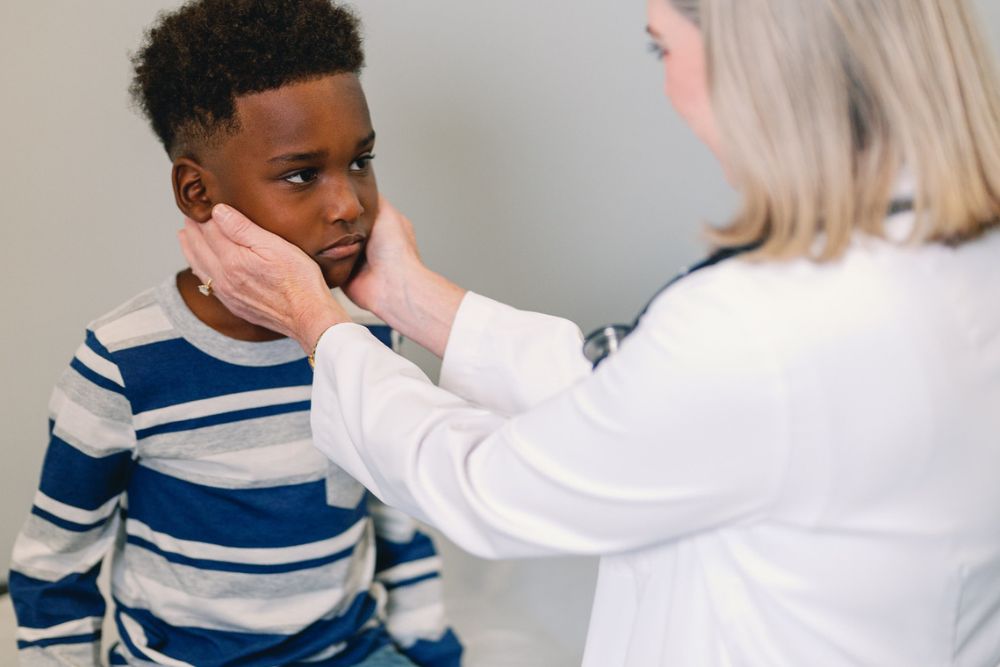The Scoop on Staph Infections for Parents

Your kid can come home with all kinds of things on their skin, and some are more pleasant than others. From bruises and scrapes to rashes, blisters, and the occasional sticker, most aren’t usually a cause for concern. But staph infections, a bacterial skin condition, can take some parents by surprise. Common in schools and extremely contagious, early treatment is key to prevent serious potential problems. As a partner in your family’s health, Urgent Care of Fairhope is here to help you get the knowledge you need to keep your children safe and give you the scoop on staph infections.
What is a Staph Infection?
Staph infections are typically caused by a genus of bacteria called Staphylococcus. There are dozens of types of staph bacteria, but most skin infections are caused by Staphylococcus aureus. These types of bacteria are common and usually harmless; they live on the skin of even healthy individuals, especially around the nose, mouth, and groin areas. They become problematic when they enter the body through a cut, break or scrape in the skin, leading to an infection.
MRSA (Methicillin-resistant Staphylococcus aureus) is a type of staph bacteria resistant to many modern antibiotics, making it a more severe concern. It’s crucial to identify and treat these infections early to prevent complications.
Signs and Symptoms of Staph Infections in Children
Staph skin infections in children can manifest in various ways. Here are some common signs and symptoms to watch out for:
- Wound Infections: If an existing wound is infected with staph, it may appear swollen, red, and warm to the touch. The wound may ooze pus or fluid. Your child may experience pain, fever, or fatigue.
- Boils: These are pus-filled bumps under the skin that may cause swelling, redness and pain. They may need to be drained by a healthcare professional.
- Impetigo: This highly contagious skin infection is common among young children. It appears as red sores or blisters on the face, hands or feet. The sores can rupture, ooze, and form a yellow-brown crust.
- Cellulitis: This deeper layer skin infection presents as a red, swollen, and tender area, often with a fever. It can spread rapidly if not treated, making it especially concerning in children.
- Scalded Skin Syndrome: Caused by toxin-producing strains of staph bacteria, this condition starts with a fever and rash. The skin looks as if it’s been burned by boiling water, leading to peeling and redness. It’s more common in infants and young children under 5.
If left untreated, staph infections can lead to more severe issues like bloodstream infections, pneumonia, or even bone infections. That’s why it’s crucial to catch and treat these infections early.
Staph Infection Treatment in Kids
Antibiotics are the first-line treatment for most staph infections. These may be given by mouth or as a topical ointment applied directly to the skin. It is essential to complete the full prescription of antibiotics, even if symptoms improve. In more serious infections, boils or abscesses may need to be drained and treated by a healthcare professional.
If your doctor suspects a MRSA skin infection, cultures will be taken and tested to determine the most effective antibiotic.
At home, proper hygiene practices can help prevent the spread of staph infections to other areas or other people:
- Don’t directly touch infected skin.
- Keep the area covered with a clean, dry bandage whenever possible.
- Use a new towel each time you clean and dry the area. Wash used towels alone in warm or hot water, using bleach if possible.
- Wash your hands thoroughly with soap and warm water frequently, especially after cleaning or changing bandages.
- Do not share clothing, towels, bed sheets, or linens until the infection is fully healed.
Let Urgent Care of Fairhope Lend a Skilled Hand
If you suspect a staph infection in your child, pay a visit to our Fairhope walk-in clinic. Our staff is trained to diagnose and treat infections with care, compassion and skill. We even have on-site laboratory testing and off-site partnerships to run cultures and provide more advanced treatment options. Check the waitlist online before you arrive to be sure you can get in, get out, and get back to smooth and healthy skin!
Search our Blog
Recent Posts
Primary Care vs. Urgent Care: Understanding Your Healthcare Options
As your hometown urgent care in Fairhope, we know that understanding where to go for medical care can sometimes be confusing. Do you visit your primary care physician (PCP) or stop by Urgent Care of [...]
Fairhope’s Spook-tacular Guide to Halloween Happenings 2024
Boo-tiful Fairhope and Eastern Shore residents, gather 'round for a spine-tingling treat! It's that time of year when things go bump in the night, and the Urgent Care of Fairhope is here to ensure you [...]
Flu Season 2024-2025: What You Should Know
Flu season is on the horizon, and it’s time to gear up for its arrival. At Urgent Care of Fairhope, we’re committed to keeping our community healthy and informed. The flu can be a serious [...]
10 Tips for Teacher Wellness
School is just back in session, and we know how hectic this time of year can be for teachers. Between lesson planning, grading papers, and managing a classroom full of energetic students, it's easy to [...]
Fantastic Fall Events on the Alabama Eastern Shore
Fall in Fairhope, Alabama may not invite a cozy sweater, but it does fill the air with pumpkin spice vibes, fresh autumn produce and tons of family fun. To celebrate this delightful season, local communities [...]
Diabetic Snacks for School Lunches: How to Maintain Blood Sugar at School
Packing school lunches can be a challenge for any parent, but it’s even more complex if your child has diabetes. You want to be sure your child has healthy snacks to keep their blood sugar [...]

